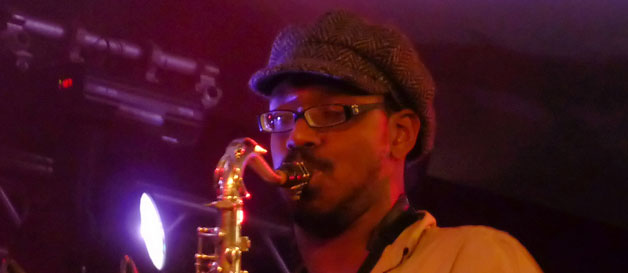An Introduction to Jazz Articulation on the Saxophone
 You can play all of the Bird licks and Sonny Rollins solos you want – at the end of the day, without proper jazz articulation, it’s not going to sound like jazz, plain and simple.
You can play all of the Bird licks and Sonny Rollins solos you want – at the end of the day, without proper jazz articulation, it’s not going to sound like jazz, plain and simple.
Of course, jazz articulation is a pretty massive topic in itself. In this video, I’m going to be focusing on one of the most distinctive features of jazz articulation, which is the concept of “ghosting” notes. For those of you unfamiliar with the term, ghosting refers to de-emphasizing certain notes so they sound so softly that, while they are often audible, they are barely audible. There is also an alternate way of attacking the reed with your tongue to give your notes a different kind of sound altogether. It’s almost like you’re “swallowing” them.
Ghosting notes gives your melodic lines that rhythmic shape that you need in order to truly swing. You can also use the tongue attack used in ghosting for other purposes, such as playing groovy repeated-note patterns in funk and r&b. There’s a lot of possibilities here, so it’s time to stop reading, and press the play button below for the full skinny.
Photo by andynew






November 28, 2011 @ 10:09 am
Nicely done, Doron.
Interestingly, we always called this specific articulation technique “half tonguing.” And, I’ve also thought of ghosting as more of an embouchure and air change than a tonguing change. Kind of like dropping the jaw…
You just show that there’s more than one “right” way to get the same results.
all my best,
~ Rick
November 28, 2011 @ 7:19 pm
Yeah, the more I talk to people about it, the more ways I see that people approach this aspect of playing. I think it’s great to take all of the different approaches into account, since each method is going to have its own sound and thereby enrich our playing that much more since we’ll have those additional colors in our “palette” of sounds.
Thanks Rick!
December 1, 2011 @ 11:41 am
Lester Young was the daddy of ghosting using the half-tongue. It was at the core of his classic style and he used it to swing in a way never heard before. Lots of two or three note figures with the accents being shifted around.
December 1, 2011 @ 11:45 am
Yeah, I can definitely hear the half-tongue sound in his playing, really adds a lot of energy. He may very well be the father of the half-tongue! (sounds kind of funny when I put it that way).
June 10, 2013 @ 5:01 pm
Hello Doron ..
My name is Valmir. I’m a Brazilian saxophonist.
I have a question, please help me:
In phrases in double time of Charlie Parker Omnibook, he uses a different articulation.
After researching quite believe it is the articulation where the reed still vibrates with your tongue on it. It’s what some call Dooden (Dood’n) Tonguing or “Sub Tonguing”, “La-la Tonguing” or “Half Tonguing”.
Other saxophonists also use this technique in his solos such as Michael Brecker, David Sanborn, etc..
Is it the same technique that you teach?
Valmir.
June 11, 2013 @ 3:22 pm
Yes, I believe that the tonguing you’re referring to is precisely what I’m showing in the video.
August 5, 2013 @ 10:22 am
Doron,
Hey, nice sound but you may have a little “slap-tongue” going on. Could be your mic. but if you listen to your ghost notes, you can hear it.
August 5, 2013 @ 9:32 pm
Well, I don’t think it could be slap tonguing because that’s a technique I don’t yet know. Unfortunately the camera I used for this video was pretty crappy, so perhaps there was some distortion that made my attacks sound a bit harsher, like slap tonguing, but I can assure you that that was not what I was doing.
I’m just glad that I now have a better camera to use for future videos! :)